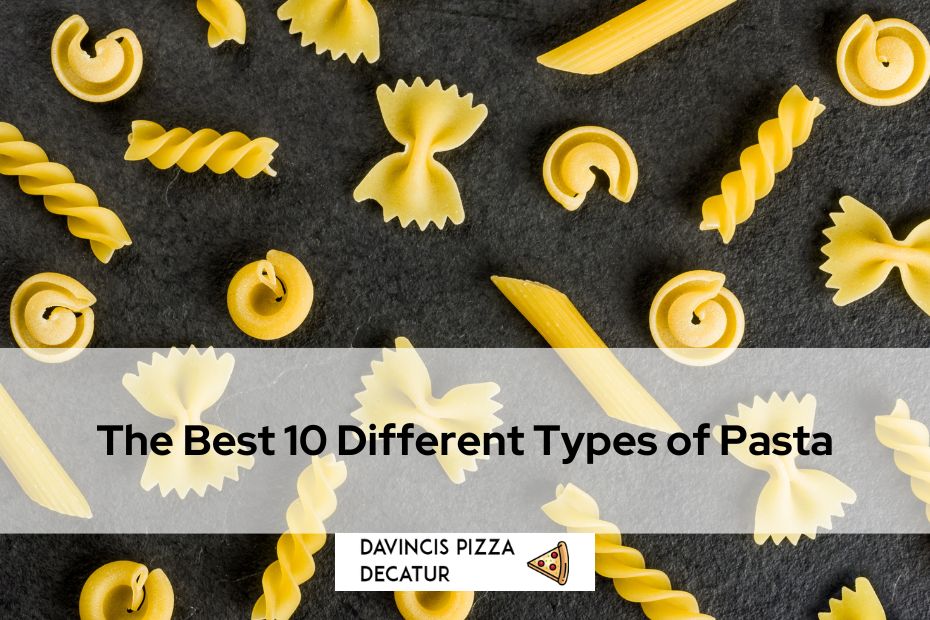1. Maccheroni alla chitarra
Maccheroni, also known as spaghetti alla chitarra, is a type of Italian egg pasta that is defined by its square cut. This cut is made by using a tool known as a chitarra, or guitar, which consists of a wooden frame that is strung with metal wires. Chieti, Italy was the birthplace of the instrument in the latter half of the 19th century.
The porous texture that is created in the pasta as a result of employing this equipment makes it possible for a variety of sauces to adhere to the pasta. Traditional maccheroni alla chitarra dishes from the area of Abruzzo are served with either pork and lamb ragu or tomatoes and meatballs as the accompanying sauce.
Earlier preparations of the dish called for saffron to be incorporated into the dough, and the eggs were beaten with the spice before being combined with the flour.
2. Schwabische Spatzle
This egg-based pasta product is usually produced by hand and is also regarded as the “Swabian national dish.” It is possible to locate references to the preparation of spatzle as far back as the 18th century. After thoroughly combining the ingredients, the dough is next kneaded until it reaches the texture that was intended.
This procedure has been significantly more mechanical ever since the invention of the kneading machine at the beginning of the 20th century. The best spatzle chefs prepare by feel because it is difficult to standardize the correct consistency of the dough, the length of cooking time that is required, and the ideal temperature.
3. Calamarata
Calamarata is a type of Italian pasta that is often shaped like a thick ring and comes in a variety of sizes. To achieve the appearance of sliced calamari, it is typically colored with squid ink and prepared using durum wheat flour as the base ingredient. The pasta is typically utilized in the preparation of the cuisine known as calamarata Napoletana. In this recipe, the pasta is paired with various types of seafood, including squid, clams, and shrimp.
4. Taglierini
Taglierini is a type of Italian pasta that looks and feels very much like tagliatelle, both in terms of its length and its visual appeal, but it is far thinner. Tajarin is the name given to the pasta that is traditionally prepared in Piedmont; it is created with eggs, flour, and water.
Taglierini is distinguished from other forms of pasta that are comparable in nature by the high ratio of egg yolks to flour that characterizes its preparation. The yolks of local eggs, which are a vibrant orange color, are frequently used to make tajarin. This particular type of pasta was initially offered for the first time in Piedmont in the 1500s with heavy sauces that were typical of “poor cuisine.”
5. Garganelli
Garganelli is a special type of Italian pasta that is distinguished by the manner in which it is prepared; traditionally, garganelli is created with flour, eggs, and water. Rolling a flat, square noodle into a tubular shape, typically with the assistance of a pencil-sized wooden twig and a weaver, causes ridges to be imprinted on the exterior of the dough as the procedure is carried out. This is how pasta is made.
It is thought that the pasta known as garganelli was first created in the Romagna region in the year 1725. Traditionally, the pasta was served in broths; but, in modern times, it is most commonly served with prosciutto and peas, creamy sauces, or rich meat ragùs.
6. Pastina
Pastina is a type of Italian pasta that can come in a wide variety of shapes and sizes, including squares, butterflies, and stars. Pastina is known for its incredibly little size. Pasta is often manufactured using semolina or wheat flour, and it is frequently utilized in the preparation of various types of broths and soups.
7. Casarecce
A type of Italian pasta called casarecce has its roots in the island of Sicily. The long twists of casarecce look to have curled up on themselves, which makes it a great pasta for carrying both hearty, traditional sauces and the more straightforward varieties. Because there is a lower risk of the pasta becoming overly dry, it can also be used in a wide variety of casserole preparations.
8. Strozzapreti
Strozzapreti are a type of hand-twisted pasta that can be found produced all over Italy, but particularly in the areas of Tuscany, Marche, Umbria, and Emilia-Romagna. Strozzapreti are typically served with a meat or cheese sauce. This type of rustic pasta is typically made with a mixture of wheat flour, semolina flour, water, and eggs, though these ingredients are not always included.
It goes particularly well with chunky, hearty sauces, whether they are based on vegetables or meat. The word “strozzapreti” literally translates to “priest choker” or “priest strangler,” alluding to the twisted and strangled appearance of the pasta.
9. Elicoidali
Similar in shape and size to the well-known rigatoni, elicoidali is a type of Italian pasta that comes in a variety of shapes. It is manufactured in the form of tubes with spiraling ridges on the exterior. These ridges assist the sauce in adhering to the pasta, which in turn provides the consumer with an increased amount of flavor in each bite.
10. Campanelle
Campanelle is a type of short, delicate, and robust pasta that originates in Italy. It is distinguished by having a hollow center and fluted edges that resemble the petals of a flower. Campanelle are typically served with heavy sauces like bechamel or chunky sauces that are packed full of vegetables since the core is particularly well designed for catching sauces.
Campanelle is a kind of pasta that is quite adaptable, so it goes particularly well with meat, fish, or tomato sauces. The shape of the pasta, which is similar to bellflowers, is referred to by its namesake, campanelle.
| Homepage | Click Here |
| Pasta | Click Here |
